#hoplophoneus
Text
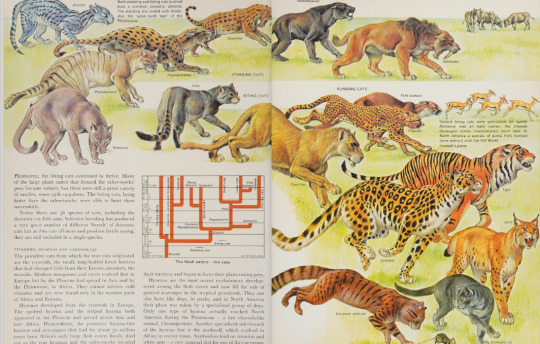
The Evolution of the Mammals. Written by L. B. Halstead. Illustration by Sergio. 1978.
Internet Archive
#prehistoric#prehistoric mammals#felines#dinictis#nimravus#pseudaelurus#hoplophoneus#eusmilus#homotherium#smilodon#cave lions#big cats#cheetahs#tigers#leopards#lynxes#wildcats#european wildcats#cats#Sergio
197 notes
·
View notes
Text

[There were no true cats, dogs, or modern carnivores of any sort in the Oligocene. Hoplophoneus had no competitors higher in the evolutionary scale than itself. Stupid, slow, and awkward though it may have been in comparison with modern cats, it was nevertheless the most active flesh-eater of the time.]
Hough (1950)
194 notes
·
View notes
Text
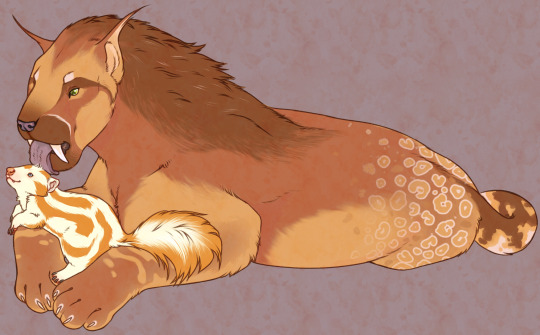
hoplophoneus primaevus and spilogale gracilis for my fiance and bestie
21 notes
·
View notes
Text
i currently have EIGHTEEN genera of sabertoothed animals lined up for the bracket, only six of which are true cats. three are non-mammalian, four are herbivores, and two are extant.
i am debating adding a third extant, but that would create an odd number of slots for the bracket so i’d need to find another after that. check out the lineup below and let me know if i have missed any.
NON-CARNIVORAN CARNIVORES:
inostrancevia
lycaops
thylacosmilus
machairoides
NON-FELID CARNIVORANS:
dinictis
hoplophoneus
nimravus
barbourofelis
FELIDS:
smilodon
homotherium
xenosmilus
megantereon
machairodus
dinofelis
HERBIVORES:
uintatherium
hydropodes
lystrosaurus
papio
i am considering adding the extant neofelis (clouded leopards) under the felid category, but that would make seven true cats. almost half the bracket. i wanted to include some more barbourofelid genera but sadly there is very little information publicly available about other members of this family. if anyone can find some good layman-accessible literature on afrosmilus or albanosmilus PLEASE send it my way
11 notes
·
View notes
Text
WELCOME TO THE SABERTOOTH SHOWDOWN.
Saber-toothed (adjective): having long, sharp canine teeth
Admittedly, this is a fairly niche topic, so before actually constructing the bracket and releasing the matchups, I think it’s important to give a background for each taxon. That way, everyone will have at least a little bit of information to base their votes on!
The competitors will be organized at the genus rank, as many are extinct and there simply isn’t a whole lot we can infer about the variation between some species from only their fossils.
Each competitor will have a dedicated post including their overall ecological success, as well as my personal opinion of how they would rank in a tier list format. If you disagree with any of my arguments, please feel free to voice your opinion, as well as argue for the placement you feel is most appropriate for each competitor.
I will tag each background/rank post by the competitor’s genus, family, and class.
CURRENT COMPETITORS
There are currently 22 genera included in the tournament. Organized by family, they are as follows:
Felidae: Homotherium, Megantereon, Xenosmilus, Machairodus, Smilodon, Neofelis, Dinofelis
Nimravidae: Nimravus, Hoplophoneus, Dinictis, Quercylurus
Barbourofelidae: Barbourofelis
Oxyaenidae: Machaeroides
Thylacosmilidae: Thylacosmilus
Gorgonopsidae: Inostrancevia, Lycaenops
Lystrosauridae: Lystrosaurus
Anomocephaloidae: Tiarajudens
Stahleckeriidae: Lisowicia
Cervidae: Hydropotes
Cercopithecidae: Papio
Uintatheriidae: Uintatherium
If you have a genus in mind that you think should be included, please submit it, as well as your personal appraisal of their rank!
6 notes
·
View notes
Text
there’s evidence that s. fatalis may have stabbed each other in the eyes/head with their saber teeth during intraspecific combat (hoplophoneus too) so i can reasonably argue that deino both can and will attempt to do this in a fight
6 notes
·
View notes
Text
Still one of my favorite reproduction matches. Restored and fixed a lot of issues on this hoplophoneus skull and got the blank repo lower from BHI. Left some things alone that I might fix some day from the previous person that worked on the skull (rounding out the sag. crest and those front teeth).
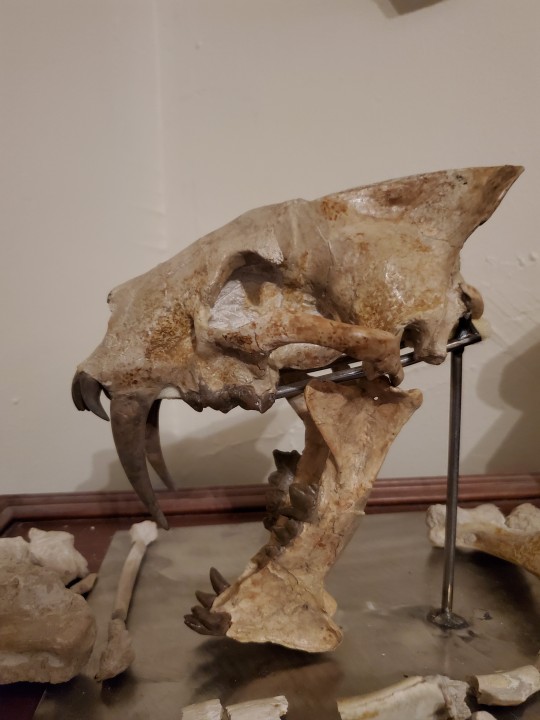
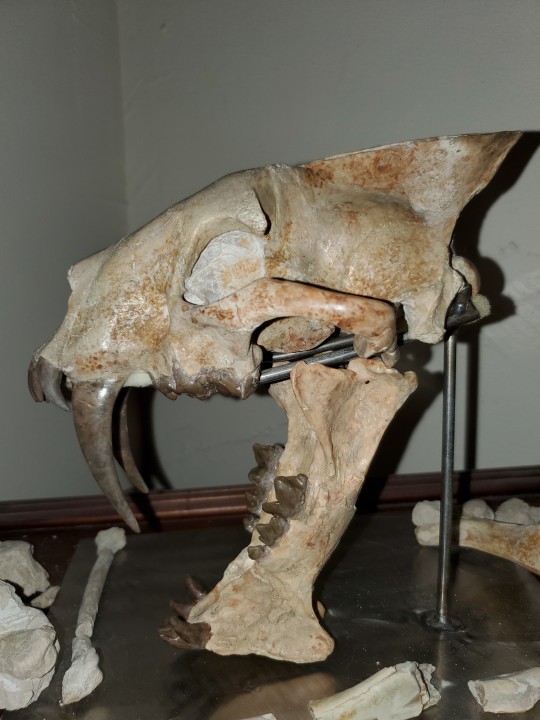

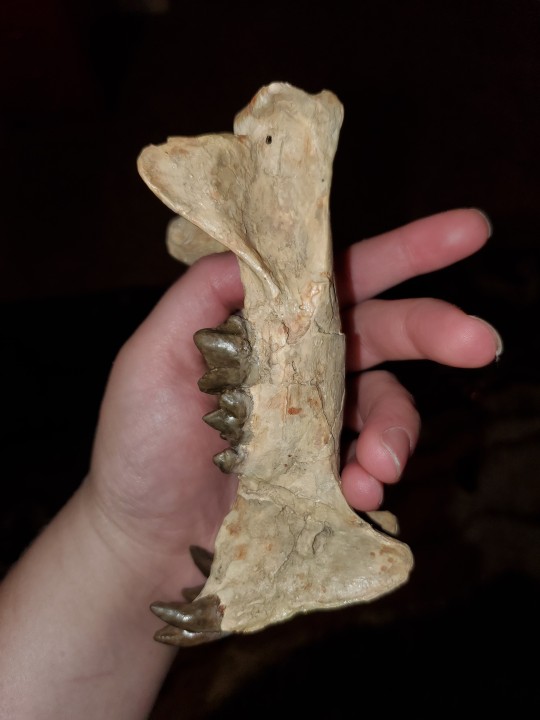
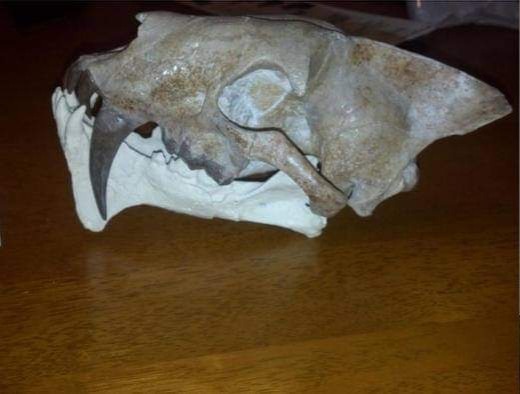
62 notes
·
View notes
Photo

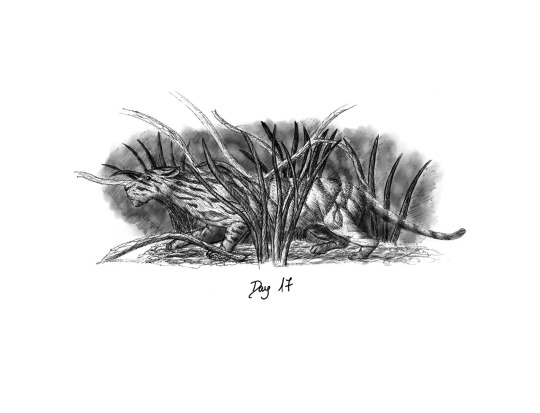



Instead of doing inktober this time, I’ve been doodling Sciartober prompts. Not all of them, and I started on day 11, got carried away with one of them, and I have no idea when I’m going to finish it, but here’s what I’ve done so far.
So, day 11 - fish. Or in my case, a happy Castorocauda trotting home with a nice, big, juicy one.
Day 17 - invisible. Hoplophoneus trying to dissapear from view.
Day 18 - in the ocean. Basilosaurus, because of course it is .
Day 19 - mammal. Fruitafossor, probably the earliest known relative of therian mammals.
Day 20 - tiny. Hadrocodium, cause it tiny. It was an early Jurassic mammaliaform that was pretty cloe to crown group mammals. I kind of screwed up the thumb, and for some reason the shading looks much worse than it does in person. I also made two versions of this, but I decided to go with this one, because while I prefer the hand in the first on, it had really stark, dramatic light and shadow that detracted from the Hadrocodium. I should have predicted that drawing in a room lit only by small desk lamp will do that. I also managed to kill my back and left arm drawing these. Because of course I did.
#synapsida#synapsids#sciartober#october art thing#early mammals#ink drawing#traditional art#palaeoblr#paleoart#palaeoart#sciart#whales#castorocauda#hoplophoneus#fruitafossor#hadrocodium#basilosaurus#i actually did more than two prompts this time around#wow#who even am i
103 notes
·
View notes
Photo
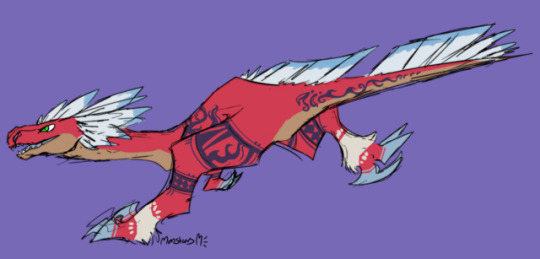

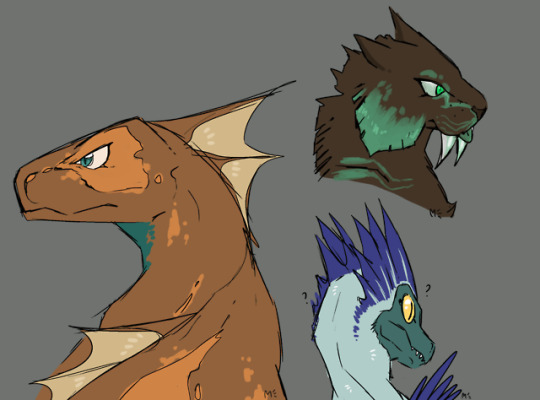
miss u fossil fighters
#fossil fighters#fossil fighters champions#afrovenator#hoplophoneus#utahraptor#velociraptor#kryptops#yeehaw love these guys#my artstuffs
900 notes
·
View notes
Photo

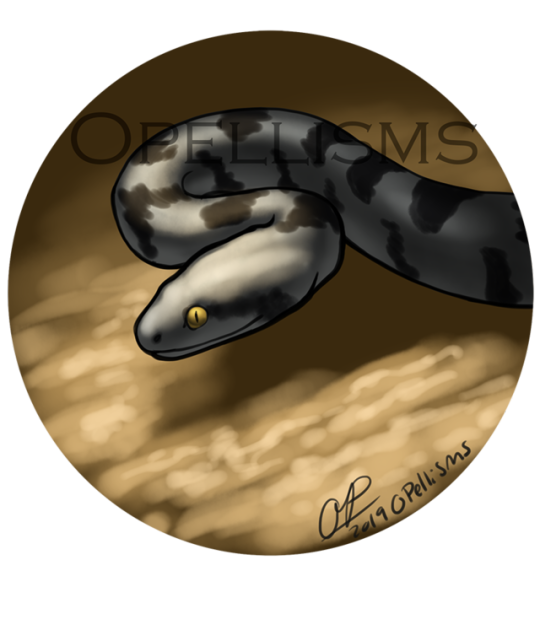
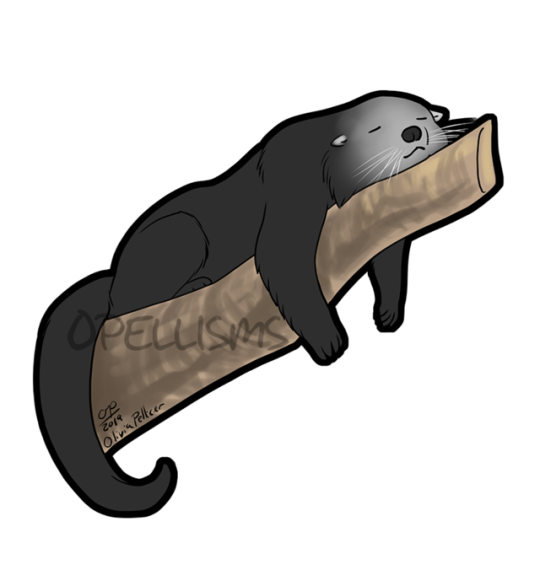
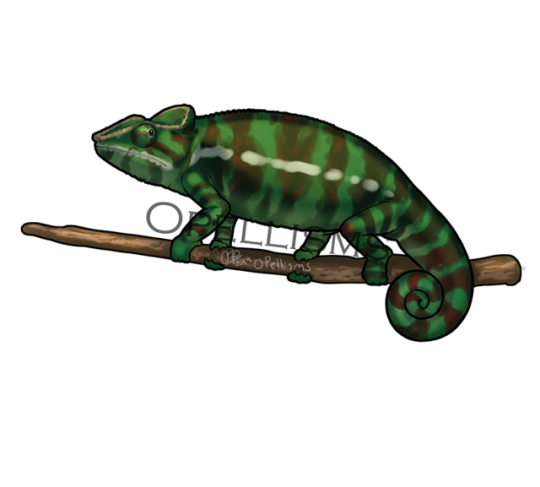
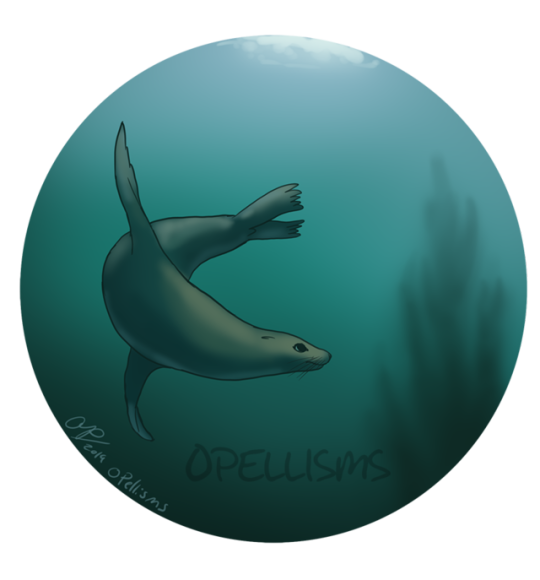
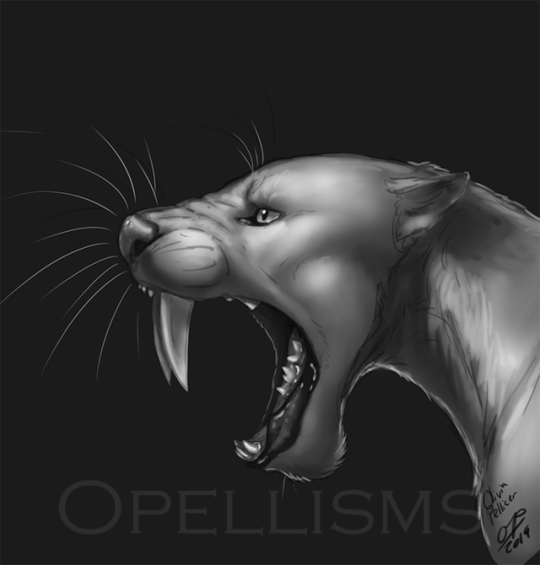

More March Mammal Madness art that I’m now allowed to share. These are from the “cat-egory” division. None of them are actually cats.
Fisher (sometimes called a fisher cat; actually a big weasel)
European catsnake
Binturong (also called a bearcat)
Panther chameleon
California sea lion
“False saber-toothed cat” known as a Nimravid (specifically Hoplophoneus mentalis)
#2019MMM#fisher#binturong#european catsnake#panther chameleon#sea lion#nimravid#hoplophoneus#march mammal madness 2019#not animation#I need to make a new watermark brush geez#March Mammal Madness
33 notes
·
View notes
Text

Hoplophoneus and Dinictis. From The First Mammals, written/illustrated by William E. Scheele. 1955.
59 notes
·
View notes
Photo
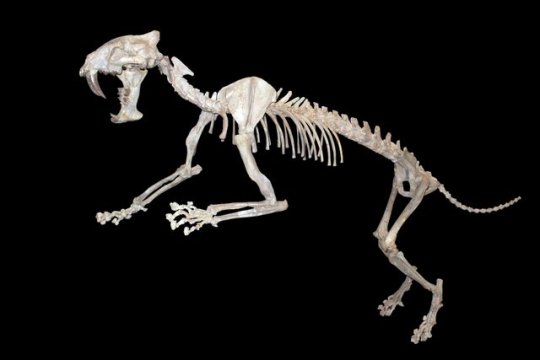
Skeleton of Hoplophoneus primaevus.
125 notes
·
View notes
Photo
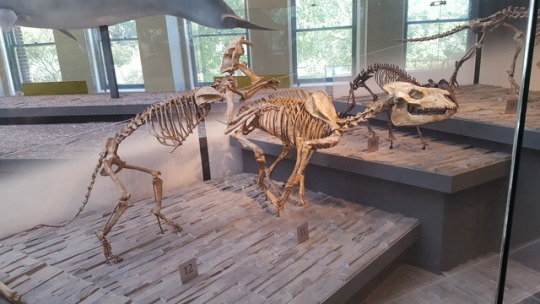
Hoplophoneus primaevus (left) attacking Hyracodon nebraskensis (right) at NHMLA. H. primaevus was a leopard sized Nimravid, a family commonly known as the false saber toothed cats, as they were neither all that close to true saber toothed cats, nor were they true cats. However, they were built similarly to cats, and filled a cat-like niche in late Eocene to the early Oligocene North America. H. nebraskensis lived alongside H. primaevus. It was a small, lightly built rhinoceros, and lived similarly to primitive horses rather than to modern rhinos. Despite its small size, it was actually very closely related to the largest known land mammal to have lived; Paraceratherium, which was another Hyracodontid (hornless rhinoceroses).
103 notes
·
View notes
Photo

Arche 1603 — Tigre à dents de sabre (Hoplophoneus).
Samedi 10 août 2019, Raphaël Zacharie de Izarra.
_________________________________________
Né le 6 décembre 1965 au Mans, Raphaël Zacharie de Izarra est un écrivain et un vidéaste (bien qu'il n'accepte pas d'être défini en ces termes, « trop forts pour qualifier [ses] petits amusements artistiques »). Depuis 2007, il se met en scène dans plusieurs centaines (milliers ?) de vidéos publiées sur Youtube et Dailymotion. Poète oisif hors du monde et du temps, tout l'inspire et devient prétexte à s'enregistrer (il peut sortir jusqu'à trois vidéos par jour). Obsessionnel, il est l'auteur de très nombreuses chroniques (lectures de ses propres textes, purement littéraires ou politiques), mais aussi d'instants de vie capturés sur le vif (des promenades à vélo, des dégustations de bière, des conversations…), ou d'exercices de style (des montages sur de la musique, plus ou moins étranges…).
Reconnu « adulte handicapé », il dédie chaque seconde de son temps à sa production, et il n'est pas rare de croiser ce personnage lunaire dans les rues du Mans, toujours équipé de son caméscope. En 2014, des associations portent plainte contre lui. Il se retrouve ainsi, par deux fois, devant les juges à devoir s'expliquer sur ses textes polémiques (soumis à passer un examen psychiatrique, on le déclare finalement « pénalement irresponsable »).
Sa chaîne Youtube : https://www.youtube.com/channel/UC4ApXwjJfcTKA3jRWMqgL0A
Une tentative de centraliser son œuvre : http://izarralune.blogspot.fr/
_________________________________________
« Projet Arche » : un animal dessiné en quelques minutes chaque jour pendant dix ans. http://projetarche.blogspot.fr
0 notes
Text
sabercat genera whose teeth probably stuck out when their mouths were closed:
-megantereon
-smilodon
sabercat genera whose teeth probably did NOT stick out when their mouths were closed
-promegantereon
-machairodus
-amphimachairodus
-paramachairodus
-homotherium
-dinofelis
-xenosmilus
-lokotunjailurus
-literally most of them that aren’t classified as “dirk-toothed cats”
genera whose teeth probably stuck out when their mouths were closed but are NOT sabercats (or cats at all)
-afrosmilus(?)
-albanosmilus(?)
-barbourofelis
-hoplophoneus
-thylacosmilus (sparassodont. on thin fucking ice.)
-inostrancevia (hey you’re not even a mammal who let you in-)
(?)- these two are barbourofelids so it’s reasonable to assume that their dental morphology resembled barbourofelis itself but for the love of god i CANNOT find a single goddamn publicly available image or description of a specimen assigned to either of these taxa please fucking help me
incomplete list but thanks for coming to my ted talk
2 notes
·
View notes
Text
A 37-million-year-old 'sabre-toothed tiger' just went up for auction
https://sciencespies.com/nature/a-37-million-year-old-sabre-toothed-tiger-just-went-up-for-auction/
A 37-million-year-old 'sabre-toothed tiger' just went up for auction

A nearly 40-million-year-old skeleton belonging to what is popularly called a sabre-toothed tiger is going under the hammer next week in Geneva, a year after its discovery on a US ranch.
The skeleton, some 120 centimetres (nearly four feet) long, is expected to fetch between 60,000 and 80,000 Swiss francs (US$66,560 to $88,750; 55,300 to 73,750 euros) at auction on December 8 in the Swiss city.
“This fossil is exceptional, above all for its conservation: it’s 37 million years old, and it’s 90-percent complete,” Bernard Piguet, director of the Piguet auction house, told AFP on Tuesday.
“The few missing bones were remade with a 3D printer,” he added, with the skeleton reconstructed around a black metal frame.
Piguet said he was fascinated by the merger of “the extremely old with modern technologies”.
The original bones are those of a Hoplophoneus. Not strictly a true member of the cat family, they are an extinct genus of the Nimravidae family and stalked around North America.
Such extinct predatory mammals are commonly called sabre-toothed tigers.

(Fabrice Coffrini/AFP)
“It was found in South Dakota during the last excavation season, towards the end of summer 2019,” Swiss collector Yann Cuenin, who owns the dozens of palaeontology lots on auction, told AFP.
“As in most finds, erosion had unearthed part of the skeleton. While walking around his property, the ranch owner saw bones sticking out of the ground.”
While the skeleton is the star of the show, there are plenty of other treasures from the past up for grabs, including ammolite, an opal-like organic gemstone, in shades of red and orange.
Measuring 40 cm long by 36 cm wide, the fossil from the Cretaceous period is 75 million years old and hails from the Canadian Rocky Mountains. It is estimated to fetch between 20,000 and 30,000 Swiss francs.
Jurassic Park enthusiasts can also buy a Tyrannosaurus rex tooth (2,200 to 2,800 francs), or, for 5,000 to 7,000 francs, an impressive 85-cm long fin from a mosasaur – a marine reptile that in the Cretaceous period was at the top of the submarine food chain.
History versus art
Though dinosaur-mania began in the United States, it has grown in Europe in recent years. Next week’s sale is the second time such an auction has been held in Switzerland.
In September 2019, the skeleton of a dinosaur (Thescelosaurus neglectus), 66 million years old and three metres long, was purchased by a Swiss-resident collector for 225,000 francs.
Debate rages as to the balance between the scientific value of such items and their worth on the open market.
Some palaeontologists insist animal or plant fossils are not decorative objects for collectors, but witness to the evolution of life on Earth and therefore scientific objects that ought to be studied and then shared with the public in museums.
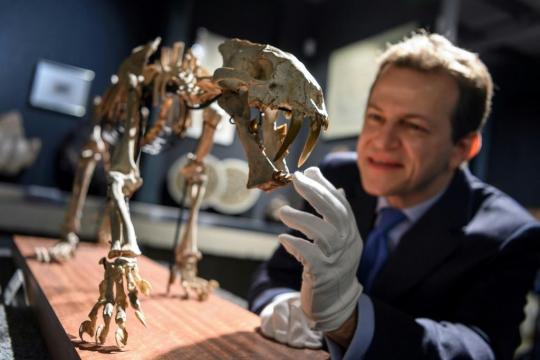
(Fabrice Coffrini/AFP)
But Cuenin said: “If we’re talking about the sabre-toothed tiger, for example, it’s not a skeleton which is of major scientific interest, in the sense that it’s something which is already known to science.
“We’ve found several dozen of them, individuals from the same species. A fossil is not just a simple scientific or technical object; it also has an artistic value,” he said.
Piguet added: “The museums are already well stocked.
“I am all for museums, but I am also in favour of objects living among us; for there to be collectors, for pieces to be bought and sold – that’s what brings culture to life.”
© Agence France-Presse
#Nature
1 note
·
View note